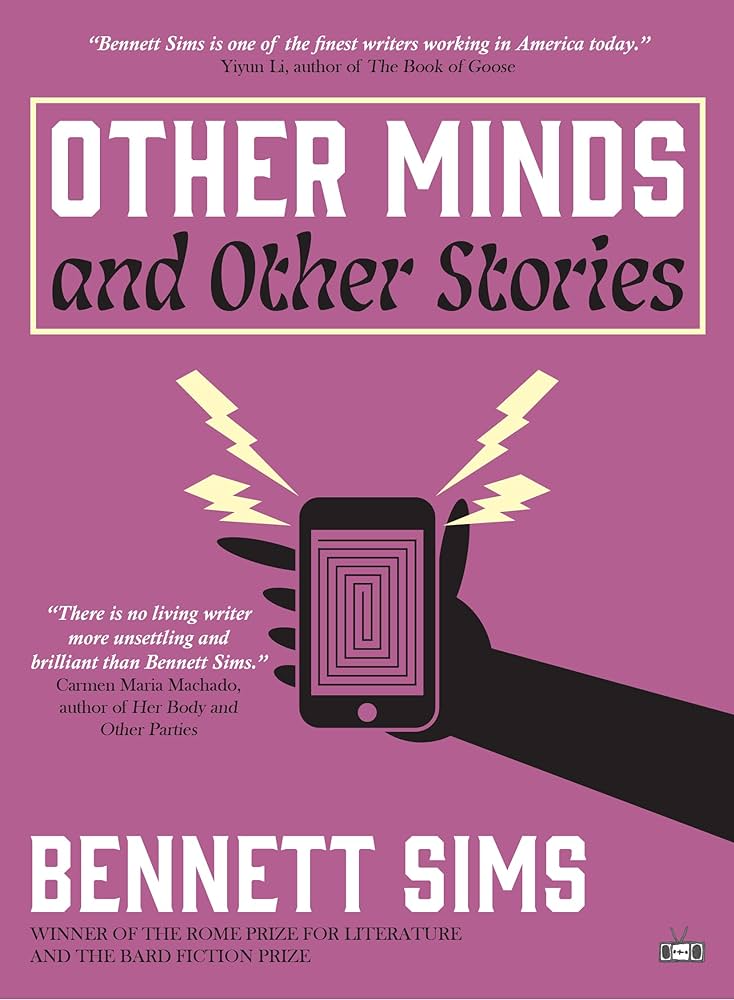When first I learned about Leanne Shapton’s Swimming Studies, I anticipated delicately written and visual riffs on swimming, a topic dear to me. I didn’t realize that Shapton, best known for her art direction and illustrations for The New York Times, was a serious competitive swimmer as a teenager growing up in the Canadian city of Mississauga. What Swimming Studies reveals is how those experiences have guided her, have in fact infiltrated her adult life on a molecular level it seems.
 Like Shapton, I too was a competitive swimmer. Unlike her, I’ve never won an officiated competitive race and my times certainly never qualified me for Olympic trials, like hers did. I came to swimming as a kid who loved the water. By default of not being very good at any other sports I ended up on the swim team in middle school and then discovered water polo, drawn to the sport’s splashing full-body-contact. I joined the water polo team in high school and for a few summers played in a league. Because most water polo players were swimmers, during the winter season I too became a swimmer. Five days a week, I’d churn through thousands of yards of water, from time to time I’d do two-a-day practices; I would weight train, carbo-load, and even shave my legs before the big meets. My senior year I was one of the team’s captains, but only because some of my teammates felt bad that I hadn’t been selected to captain the water polo team. It didn’t matter — I had fun. Some of these guys counted among my closest friends, and the team’s coach changed my life (another story for another time). There were a few guys on the team who were on Olympic trajectories, or at least that’s what coaches and parents told them in order to justify their grueling year-round schedules and regimens. I was always happy to cheer them on or be a lap counter for their long-distance races, but that was as close as I got to being a champion swimmer. Swimmers like me had weekends and would go months at a time without structured practices.
Like Shapton, I too was a competitive swimmer. Unlike her, I’ve never won an officiated competitive race and my times certainly never qualified me for Olympic trials, like hers did. I came to swimming as a kid who loved the water. By default of not being very good at any other sports I ended up on the swim team in middle school and then discovered water polo, drawn to the sport’s splashing full-body-contact. I joined the water polo team in high school and for a few summers played in a league. Because most water polo players were swimmers, during the winter season I too became a swimmer. Five days a week, I’d churn through thousands of yards of water, from time to time I’d do two-a-day practices; I would weight train, carbo-load, and even shave my legs before the big meets. My senior year I was one of the team’s captains, but only because some of my teammates felt bad that I hadn’t been selected to captain the water polo team. It didn’t matter — I had fun. Some of these guys counted among my closest friends, and the team’s coach changed my life (another story for another time). There were a few guys on the team who were on Olympic trajectories, or at least that’s what coaches and parents told them in order to justify their grueling year-round schedules and regimens. I was always happy to cheer them on or be a lap counter for their long-distance races, but that was as close as I got to being a champion swimmer. Swimmers like me had weekends and would go months at a time without structured practices.
My body is not big and lanky and I do not have feet that resemble flippers. No amount of training would have gotten me to the Olympic trials. Physical attributes aside, I never had the drive to be a serious swimmer because I discovered other interests, like the girls’ team and The Grateful Dead. So I simply swam for fun and in doing so built up a familiarity and comfort level with the water that I’ll never lose. I basked in the easy paychecks of lifeguarding at summer camps and country clubs, sometimes earning extra teaching little kids how to do flip turns. To this day, any swim I take, whether doing laps at the Y or floating in whatever body of water I can access, is a pleasure, and a respite from the gravity of life on land.
Doubtless, if we raced, Shapton would beat me, but we both possess, and thrive off, “a knowledge of watery space, being able to sense exactly where [our] body is and what it’s affecting, an animal empathy for contact with an element.” And here we start getting at the heart of the matter and what makes this book astounding. Any dedicated swimmer knows exactly what Shapton means; we sense and control our movements, from the tips of our fingers to the flutter of our feet, breathing very specifically, detecting any shifts in conditions, from the presence of other swimmers to the tug of a current. For those intimidated by the water, such intimacy with it is horrifying, or at least serious enough that you never go out beyond where the waves break. But Shapton pares down her experiences as a swimmer and grafts the core lessons to other parts of her life, allowing them to bloom in ways that have everything and nothing to do with swimming.
Surprisingly, the most important lessons are not about her life as an artist, but as an individual and as a woman, a woman who learns to love herself and others. As a swimmer trying to make the Canadian Olympic team, she was a machine honing in on a number, an all-consuming quantifiable ideal, as recounted in a passage about a solitary early morning pre-training breakfast, consisting of her own milky instant bran muffin mix concoction:
I put the batter-filled mug in the microwave and set the time to 1:11:00, the time I want to swim the SC 100m breaststroke in 1987. Then I cover my eyes with one hand, finger on the start panel, imagining my starting block and the pool…I push Start on the microwave. Breath, dive. In the kitchen, in my track pants, there are eight or nine strokes the first length, a two-handed touch, and silence again at the turn…Halfway down the pool on my final length I hear sharp beeping and open my eyes – the microwave is flashing 00:00:00. Too slow by about five seconds.
Competition, especially at the Olympic level, makes all too clear the risks of striving for perfection. The importance I attach to swimming is very real, but swimming has never been the basis of my identity. For Shapton, at least for a time, it was — a chlorine-cured identity built of a body and mind constantly processing lap times and adjusting stroke lengths to achieve record swims. What her elegant prose allows to float slowly to the surface with the fluid definition of air bubbles is the fact that because she did not succeed at the Olympic trials she has succeeded in life by learning that life is “complicated, mostly sad, and mostly beautiful.”
Living in northern California after college, I always got a kick out of never really being able to swim in the frigid Pacific waters, even during summer, but during the winter always being able to find an open outdoor pool. It was in these years when I met the woman I would marry. Here again Shapton and I share something else in common: a bond with our spouse forged by water. In the case of my wife, I taught her to be more at ease in the water by teaching stroke mechanics and the importance of exhaling when your face is submerged. And while she still refuses to join me out in the big swells off a beach like Waimea Bay on Oahu’s North Shore, I turned her on to swimming as exercise and the joys of long relaxing paddles through the tranquil waters of lakes in central Maine.
James, Shapton’s husband, imparted to her something even more important than taking a shine to water: “Watching him in the waves, I realize he doesn’t see life as rigor and deprivation. To him it’s something to enjoy, where the focus is not on how to win, but how to flourish.” As Shapton comes to terms with her life as being more than just a swimmer, her flourishing is the ability to share herself with James, her family, friends, and herself in a way that had not been possible when she was more a swimmer chasing a record than an individual.
Exploring memories of meets and practices, while also talking to her family and friends today, and paying close attention to swimmers of all sorts, Shapton is able to identify competitive swimming’s influence on her out of the water. We learn that next to her bed she keeps a framed black-and-white photograph of a woman swimming. In Shapton’s mind, the swimmer is oblivious to the photographer: “It reminds me of the love I have for James when he doesn’t know I’m looking at him.” Reading of Shapton’s process of accepting her new relationship with pools, she unpacks several such insights and perspectives, referring not only to her relationships with people but with her approach to art.
Trading water-pruned fingers for ink-stained ones, Shapton recognizes the similarities between the two equally ambitious pursuits. “Artistic discipline and athletic discipline are kissing cousins,” she writes, “they require the same thing, an unspecial practice: tedious and pitch-black invisible, private as guts, but always sacred.”
The coral blue cover stamped with a dark blue swimming cap makes clear that Swimming Studies is indeed meant to be a physical object, a piece of art. The book features some of Shapton’s watercolors. Their subtleness is strikingly appropriate. The same as a flailing splashing crawl stroke does not result in swimming fast, no matter how quickly you move your arms, Shapton knows how to make both her written and visual ideas glide, concealing the hard work necessary to create the perception of effortlessness. All that matters is the end result. Though in this case, the artwork is secondary because Swimming Studies is not about Leanne Shapton the artist, it is about Leanne Shapton the person, and while swimming, visual arts, and other people are all vital components in her existence, she has learned how to define them, rather than let them define her: swimming not as a way of life but life as a way of swimming.
Image Credit: Wikipedia









